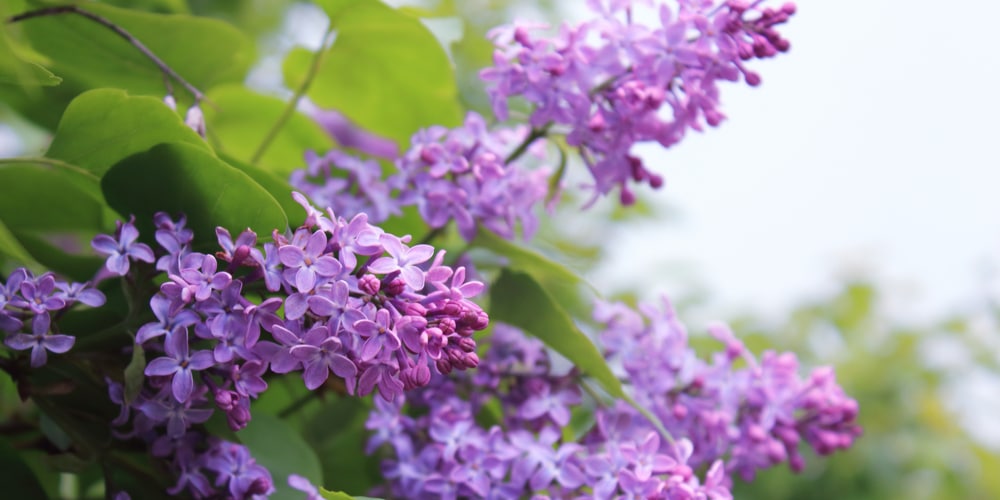Lilacs are stunning flowering shrubs you should consider adding to your garden if you live in USDA hardiness zones between 4 and 7. These plants perform excellently as hedges or borders. Plus, they add color to your garden during the blooming season and attract plenty of pollinators (including bees and butterflies).
If you have an image of lilacs’ looks, you should reconsider yourself. Indeed, there are more than 800 species of lilacs plants, with blooms ranging from blue, white, pink, magenta, and purple.
While they are not particularly complicated to care for, lilac shrubs will grow best with adequate levels of attention. Besides frequent watering and recreating optimal soil conditions for your plants, you should also feed them and keep an eye on pests and diseases that might damage your plant.
But do lilacs need fertilizer? To find an answer to your question, read on. Here you’ll learn how to make the most out of these relatively easy-to-grow but stunningly looking plants. Keep in mind that fertilizer won’t solve your issues if you have any.
First, you must provide your plants with what they need to survive. Ensure your place them in well-draining soil with slightly alkaline conditions. Plus, you must locate them somewhere they will receive enough sunlight during the day. Remember that lilacs grow well in sunny locations.
Plus, you will need to prune them often, especially if you plant them as hedges. The process will keep your plants healthy and limit the attacks from pests and diseases while maintaining an attractive shape. But what about fertilizing? You’ll find all you need to know about feeding lilacs in the following sections.
Do Lilacs Need Fertilizer?
Lilacs are not challenging plants. If you place them under optimal conditions, you shouldn’t have problems growing them in your garden. The good news is that if your soil isn’t poor in nutrients, your lilacs will do well even without regular fertilizing. However, for nutrient-deprived conditions, you should consider adding a product.
Fertilize in the spring to boost flower production and keep your plants healthy. Feeding your plants promote leafy growth and healthy roots. Plus, you will experience better blooming and more flower production. Of course, you should never overdo it. Plants that receive too much nitrogen will display lush leaves but not many flowers.
An adequate fertilizer should have an even balance of nitrogen, phosphorous, and potassium. The optimal ratio should be 5-10-10. Spread one cup of food around the root zone of your plant. And don’t forget to water your lilacs thoroughly after the application.
If you prefer using organic products, consider adding bone meal to your shrubs: not only does it feed your lilacs (and provide them with the proper balance of nutrients), but it also contributes to making the soil more alkaline. Because it is a natural product, your lilacs won’t have problems intaking it.
Also, keep in mind that you shouldn’t fertilize your plants before the first one or two years of planting. You may have to make some amendments to the soil to accommodate it to welcome your plants, but after creating the optimal conditions for them to thrive, fertilizing is not necessary until the first couple of years of their life. You should use store-bought fertilizers only for plants in poor soil. Otherwise, organic solutions will be more than enough.
Instead, consider mulching around your plants to improve the nutrient content and increase water retention. Mulch can regulate the soil temperatures and prevent damage to your plants’ roots during the hottest months of the year.
Additionally, don’t forget pruning. Sometimes, it is the best way to enhance flower production, especially if your plant is a couple of years old. If done correctly, pruning can rejuvenate your plants. Of course, as with most things in life, overdoing will be counterproductive. Ensure you never prune more than one-third of the old canes of your plant. Only eliminate unhealthy-looking and broken branches to ensure adequate airflow and increase the growth of new blooms. Also, pruning will decrease the spread of diseases, especially fungal infections.
Do Lilacs Need Fertilizer?: The Bottom Line
In general, provided that you plant your lilacs under the optimal conditions for their growth, you shouldn’t feel the need for fertilizer. And if you want to, you can have exceptional results with organic materials such as a bone meal. Still, if your soil’s conditions are poor, you should consider adding a regular fertilizer with adequate nutrient balance.
Related Article: Can Goats Eat Lilacs?

